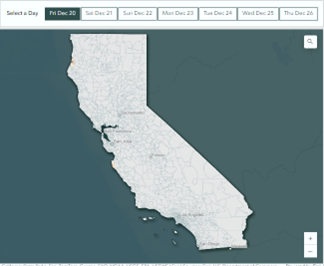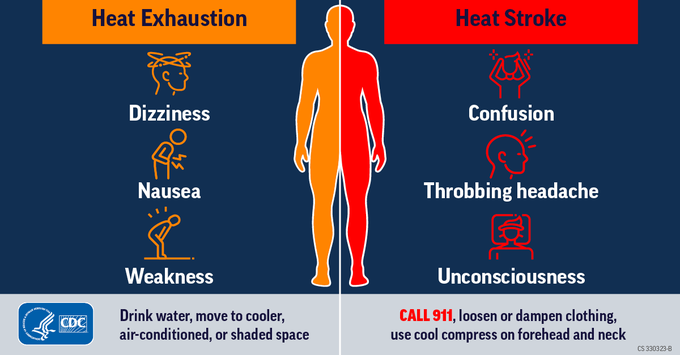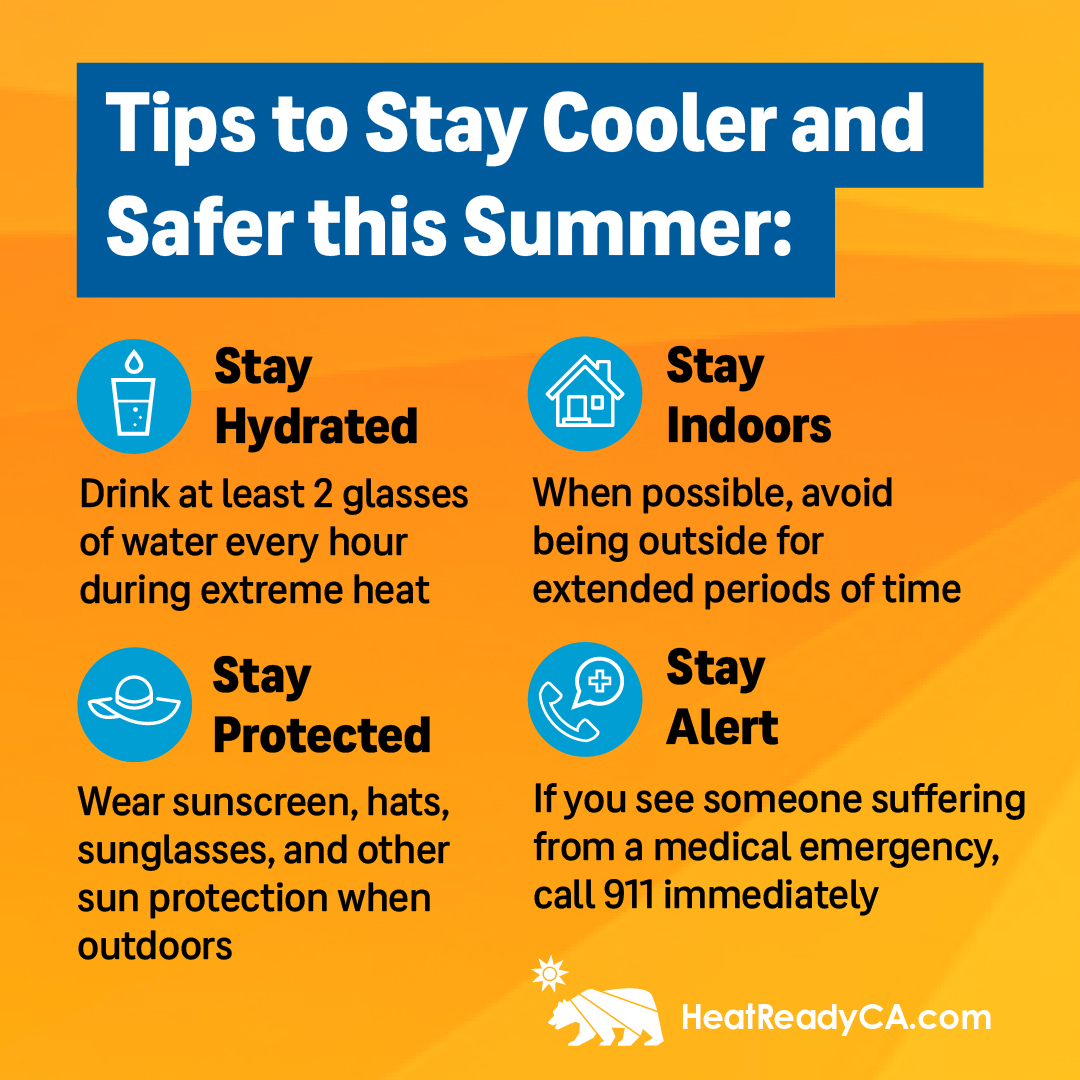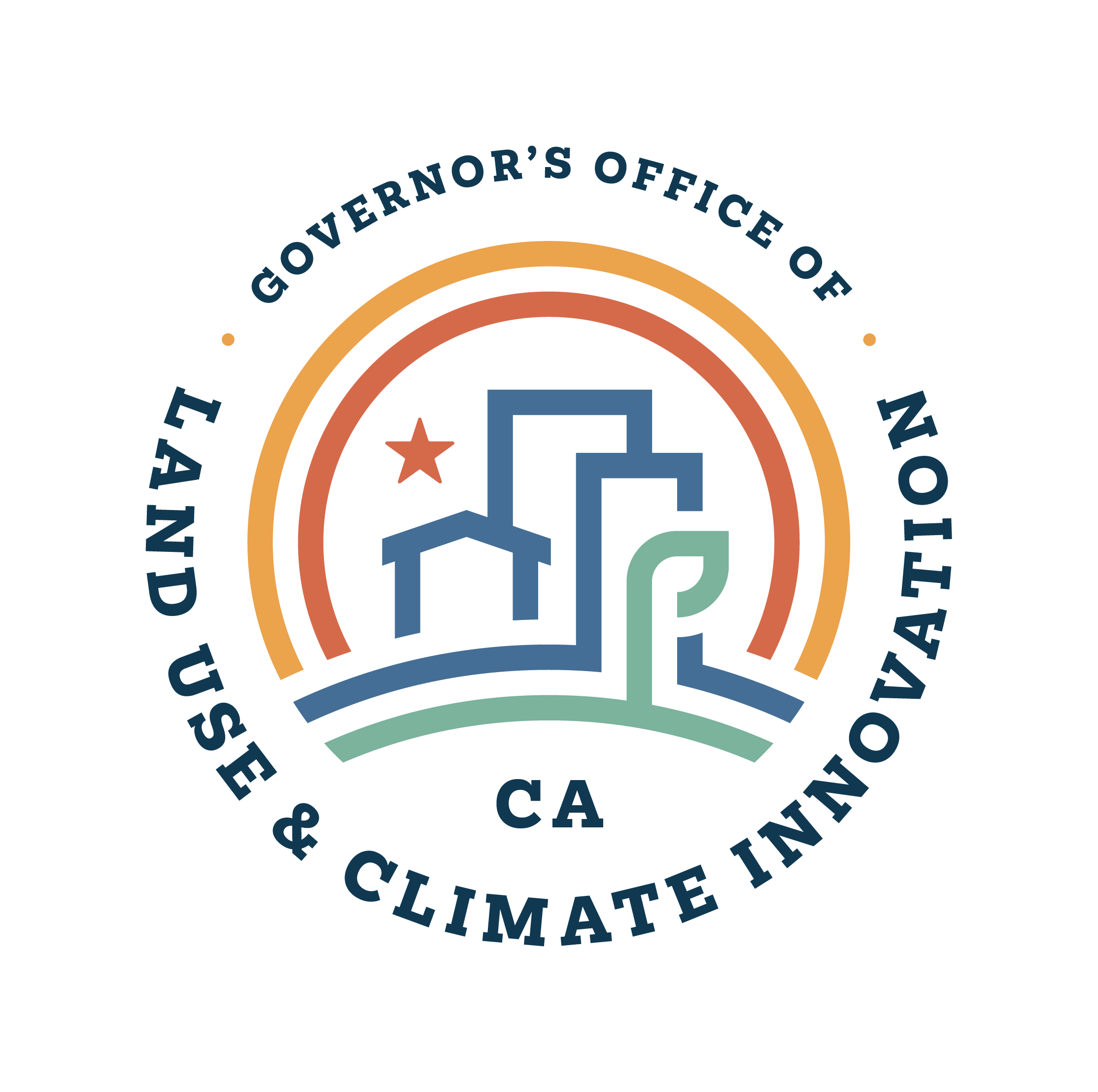The Reality of Heat in California
Heat is not just a weather inconvenience—it is a dangerous climate hazard affecting Californians today. As climate change continues and temperatures rise across the state, communities are feeling the impacts of extreme heat.
The California Communities Extreme Heat Scoring System (CalHeatScore) is built for Californians to raise awareness of extreme heat impacts and to connect communities to locally relevant resources to keep themselves safe.
What is CalHeatScore: A Heat Warning Tool for Everyone
CalHeatScore is a public health tool to help Californians stay informed, ready, and safe when temperatures rise. The purpose of CalHeatScore is to reduce heat-related illness and save lives by translating meteorological, weather and health data into easy-to-understand heat risk alerts.
How CalHeatScore Works
The Future of CalHeatScore: A Heat Protective Tool for California
OEHHA is conducting public engagement and seeking feedback to refine and improve CalHeatScore. We invite community members, local and Tribal governments, researchers, nongovernmental organizations, and others to share their ideas and input on CalHeatScore.
Get Involved
- Sign up to receive updates about CalHeatScore
- Attend upcoming workshops
- Submit comments and suggestions through the CalHeatScore comment portal. Information submitted through this form is subject to Public Records Act requests and may be provided to a third party.
CalHeatScore Informational Webinar Series
This series is a partnership effort between OEHHA, the Governor's Office of Land Use and Climate Innovation (LCI), the Los Angeles Regional Collaborative for Climate Action and Sustainability (LARC), and the UCLA Luskin Center for Innovation.
CalHeatScore Webinar #3: CalHeatScore State Agency Partners & Review
Please join us for the third webinar in a series of six on Wednesday, October 15, 2025, from 12-1pm. This webinar will focus on the newly released CalHeatScore tool. This webinar will provide an overview of AB2238 (CalHeatScore’s enabling legislation), highlight state agencies that are integrating CalHeatScore into their programs, and outline upcoming deliverables from the CalHeatScore team. Register for the webinar on Zoom.
Webinar #4: CalHeatScore as an Extreme Heat Planning Resource
Please join us for the fourth webinar in a series of six on Wednesday, November 12, 2025, from 12-1pm. This webinar will focus on the newly released CalHeatScore tool. This webinar will provide an overview of extreme heat planning at the state level, highlight California communities who are developing local extreme heat plans, and review the purpose and proposed contents of the CalHeatScore User Guide. Register for the webinar on Zoom.
CalHeatScore Tool
Introduction:
CalHeatScore is a public health tool for individuals, communities, decision makers, policy makers, and researchers, seeking up-to-date information about heat events and resources to keep individuals and communities safe.
The California Communities Extreme Heat Scoring System (CalHeatScore) tool was released on December 31, 2024. CalHeatScore is a web mapping tool that uses a heat-health ranking system to provide awareness to local and regional extreme heat events in California. CalHeatScore translates weather information into easy-to-understand heat scores, ranging from 0 to 4 to indicate increasing levels of human health risk from extreme heat impacts.
CalHeatScore is updated daily, incorporating temperature forecasts to indicate upcoming extreme heat events. Because California has differing climates across the state and even within counties, risk from extreme heat is calculated at each zip code. The CalHeatScore risk is informed by local weather conditions and historical heat-related emergency department visits. Read the methods document for more detail on how CalHeatScore was built.

CalHeatScore Guidance
| CalHeatScore (CHS) Value | Impact Level | Meaning* |
|---|---|---|
| CHS 0 | Low | No elevated community risk of heat-related illness. |
| CHS 1 | Mild | Warm day. Community risk of heat-related illnesses may increase up to 1⁄3 above baseline. |
| CHS 2 | Moderate | Hot day. Community risk of heat-related illnesses may increase up to 2⁄3 above baseline |
| CHS 3 | High | Very hot day. Community risk of heat-related illnesses may be up to double the baseline. |
| CHS 4 | Severe | Extreme heat day. Community risk of heat-related illnesses may be more than double the baseline. |
* Increased risk estimates for CalHeatScore are based on an analysis conducted using emergency department visit data from summer months (i.e., May to October) of 2016-2018. The general applicability of these results may be limited. See the CalHeatScore Methods Documentation for more details.
CalHeatScore: Frequently Asked Questions (FAQs)
What is CalHeatScore?
The California Communities Extreme Heat Scoring System (CalHeatScore) is a new public health tool to help protect people from extreme heat. CalHeatScore provides the public with information to help plan and prepare for extreme heat events, including information about life-saving resources to help protect at-risk populations. CalHeatScore uses historical climate, forecasted weather, and health data to score heat events based on their intensity and potential impact on health. CalHeatScore creates an easy-to-understand scale of 0 to 4 for all ZIP codes in California, every day, to communicate heat risks. CalHeatScore also connects people to locally relevant resources, such as cool centers, so that they can be prepared when dangerous heat occurs.
Why is CalHeatScore being developed?
CalHeatScore is being developed to reduce heat-related illness and save lives by translating meteorological, weather and health data into easy-to-understand heat risk alerts. This tool raises awareness of extreme heat events and empowers parents, seniors, caregivers, and communities to plan for, mitigate, and survive extreme heat events. CalHeatScore is committed to prioritizing the most vulnerable populations and ensuring that everyone has the information they need to stay safe during extreme heat. The CalHeatScore mapping tool was released on December 31, 2024.
How does the CalHeatScore tool work?
CalHeatScore is a public health tool that translates local weather and health data into information that the public can use. Here’s how it works:
- Localized Heat-Health Thresholds: Provides temperature thresholds that indicate the health risks of heat that are specific to California communities at the ZIP code level.
- Daily Updates: Delivers updated daily forecasts of heat risk related to localized increases in expected heat-related illnesses.
- Local Population Profiles: Provides local sociodemographic profiles on some of those most impacted by heat, including children, older adults, outdoor workers, linguistically isolated, and those without health insurance.
- Resource Connections: Points users to locally relevant resources, such as the locations of cool centers.
What makes CalHeatScore distinct and suitable for California?
CalHeatScore is designed specifically for California’s unique needs:
- Locally Relevant Data: Provides ZIP code-level rankings of the severity of heat events that are tailored to California’s diverse microclimates and populations. Also includes supplemental data which identifies proportions of different populations more sensitive to extreme heat.
- Resource Integration: Connects users to locally relevant resources, such as cool centers. Centralizes access to heat-related resources across multiple government departments.
Who are the partners involved in developing CalHeatScore?
The Office of Environmental Health Hazard Assessment leads the effort to develop CalHeatScore with support from:
- Office of Land Use and Climate Innovation: Consults on communication strategies and partnerships.
- Department of Insurance: Provides data and insights from a 2024 report on insurance gaps relating to heat.
- Department of Public Health (CDPH): Offers recommendations on local applications of the tool.
- Office of Emergency Services (CalOES): Assists in communications and dissemination plans.
- In addition to these specific roles, all state agencies listed provide input on improvements to CalHeatScore.
- Additional collaborators contributing to the development of the CalHeatScore system include the UCLA Center for Health Climate Solutions and researchers at Oregon State University and Applied Climatologists, Inc.
A public engagement process to further refine the tool based on stakeholder input will begin in early 2025.
How should CalHeatScore be used now?
CalHeatScore can already be used to stay safe during extreme heat. Users are encouraged to:
- Access daily updates and heat rankings.
- Use the tool to find local resources like cool centers.
- Provide feedback to help improve future versions.
How can I provide feedback or get involved?
Users can share their experiences and suggestions to help improve CalHeatScore. Opportunities to provide feedback will be available on the CalHeatScore website and at community outreach events.
Stay Cool with CalHeatScore
CalHeatScore is here to help Californians prepare for and mitigate the impacts of extreme heat. Join our listserv on our website to get updates on CalHeatScore!
Background and partnerships
About AB 2238
In 2021, the California Department of Insurance’s (CDI) Climate Insurance Workgroup recommended California build a system to rank heat waves to better communicate the deadly risks to Californians and help communities prepare, similar to how tropical storms and hurricanes are described by "category" level.
Assembly Bill No. 2238 (L. Rivas, Chapter 264, Statutes of 2022) codified CDI’s recommendation by requiring CalEPA to develop a statewide extreme heat ranking system. AB 2238 requires the Integrated Climate Adaptation and Resiliency Program (ICARP) to disseminate CalHeatScore information to communities and local leaders, and the Governor's Office of Emergency Services (Cal OES) to support ICARP’s dissemination and communications campaign. The Department of Public Health (CDPH) provides consultation on CalHeatScore and will support OEHHA to adapt the system for use at locally relevant scales. AB 2238 also required CDI to release a report on the insurance-related costs of extreme heat, described below.
As part of the requirements of AB 2238, the CA Department of Insurance released a first-of-its-kind report: “Impacts of Extreme Heat to California’s People, Infrastructure, and Economy", which showcased how a single heatwave could not only result in hundreds of heat-related deaths and emergency department visits, but billions of dollars in economic losses. The total economic impacts across the Health and Safety, Manufacturing and Agriculture, Infrastructure, Energy, and Governance sectors for the seven studied extreme heat events amounted to $7.7 billion, affecting nearly the entire population of California. The California Department of Insurance is collaborating with OEHHA to iterate on the CalHeatScore model and explore how the tool can be used to provide insurance-related economic protections from extreme heat.
CalHeatScore is also required to include recommendations on thresholds or triggers for the implementation of policies that reduce health risks associated with extreme heat and recommendations for metrics to measure the short- and long-term impacts of extreme heat on human health. These are key components of CalHeatScore and will be addressed in future iterations of the tool.
The CalHeatScore system has been developed in response to AB 2238, considers the findings of the CDI Climate Insurance Report and OEHHA works to continue researching the issues and recommendations highlighted by the report. Links to all these partners heat related websites, and selected content is available in the Our Partners and Resources sections below.
AB2238 requires CalHeatScore to be based on...
- available meteorological data on heat events,
- data on the associated health impacts,
- measures of extreme heat severity and its health impacts,
- locally relevant information such as urban heat island effects; and
- public input.
Collaboration with UCLA and LARC
OEHHA’s Extreme Heat Ranking System Development Section (EHRSDS) developed CalHeatScore on behalf of CalEPA through a contract with University of California, Los Angeles, Center for Healthy Climate Solutions (UCLA-CHCS).
In consultation with EHRSDS, UCLA-CHCS, led by Dr. David Eisenman, developed the underlying model used in CalHeatScore. Building on their work to create the UCLA Heat Map, the development of the CalHeatScore model was conducted in collaboration with Dr. John Molitor of Oregon State University and Dr. Larry Kalkstein of Applied Climatologists.
The UCLA Luskin Center for Innovation and the Los Angeles Regional Collaborative (LARC) are developing training materials for CalHeatScore users and also convening interactive cohort dialogues intended for community experts to share ideas on how CalHeatScore can be improved.
Each of these collaborators’ websites are linked below.
Our Partners
About OEHHA
OEHHA's mission is to protect and enhance the health of Californians and our state’s environment through scientific evaluations that inform, support, and guide regulatory and other actions. OEHHA supports the development and operation of CalHeatScore as part of California’s implementation of AB 2238. OEHHA has also developed related tools that synthesize environmental and socioeconomic data into statewide maps, such as CalEnviroScreen.
OEHHA has conducted studies on the health impacts of increased heat and tracked heat-related indicators of climate change. OEHHA’s studies have shown associations between heat and a range of negative health affects including death, low birth weight, and increased emergency room visits and hospitalizations for conditions ranging from heart conditions to mental health. These studies also have helped identify populations that may be more vulnerable to heat-related deaths and illnesses, including older adults, pregnant people, infants and children, and people of color.
This research also has helped inform some of California’s other extreme heat efforts: Preparing California for Extreme Heat: Guidelines and Recommendations (2013), CalEPA Urban Heat Island Index Report (2015) , CA Climate Adaptation Strategy , and the Extreme Heat Action Plan (2022).
Resources
Sign up for Emergency Alerts
- CalAlerts: Sign up for national and California emergency alert notification
- Listos: Sign up for County and City specific emergency alert notification
Additional Safety Tips and Resources
Know the Signs of Heat Illness

Know How to Stay Cool

Find your nearest cooling center on the CalHeatScore map or at County Cooling Centers and Resources
If you have signs of heat-related illness, and the strategies listed above or at the resources below are not providing relief, please contact a medical provider or go to the nearest emergency department as soon as possible
Tips for staying informed and safer during extreme heat
- Heat Ready CA
- CDPH Heat and Summer Safety
- CDPH Tips for Preventing Heat-Related Illness
- CalOES Cooling Centers
- OEHHA Fact sheet “Pregnancy and Heat – Protecting yourself and your baby”
- OEHHA Fact sheet “Children and Heat – Protecting infants, kids, and teens”
- About Heat and Your Health | Heat Health | CDC
Additional extreme heat programs, tools, and plans
- California Department of Insurance (CDI)
- Governor's Office of Planning and Research (OPR)
- Extreme Heat Planning
- Heat Mapping Tools
- OEHHA Research
- Centers for Disease Control: Temperature Extremes | Climate and Health | CDC
Contact Us

Walker Wieland
Walker Wieland is the manager of the Extreme Heat Ranking System Development Section: CalHeatScore@oehha.ca.gov.
For media inquiries, please contact Amy Gilson: Amy.Gilson@oehha.ca.gov.






